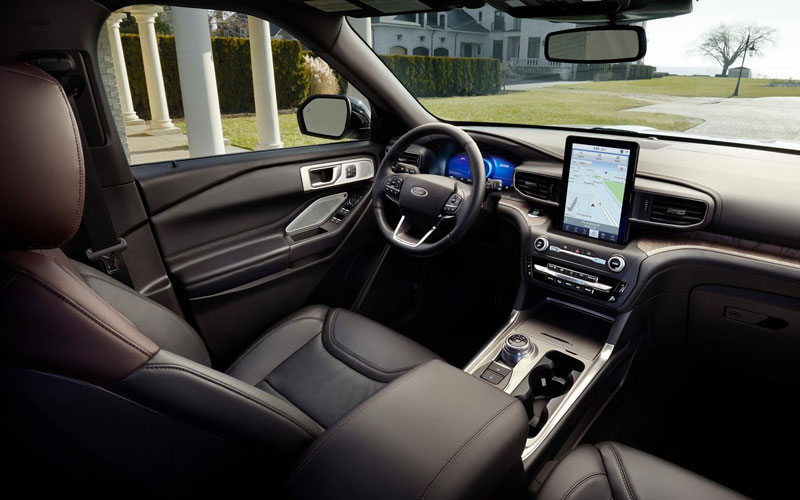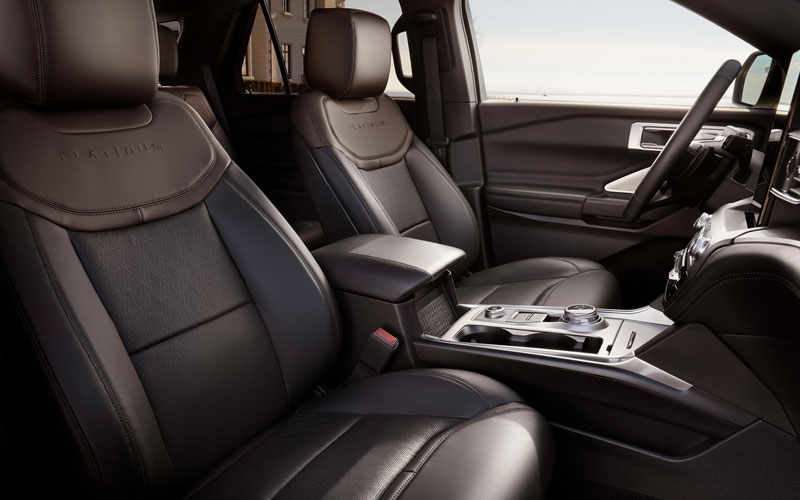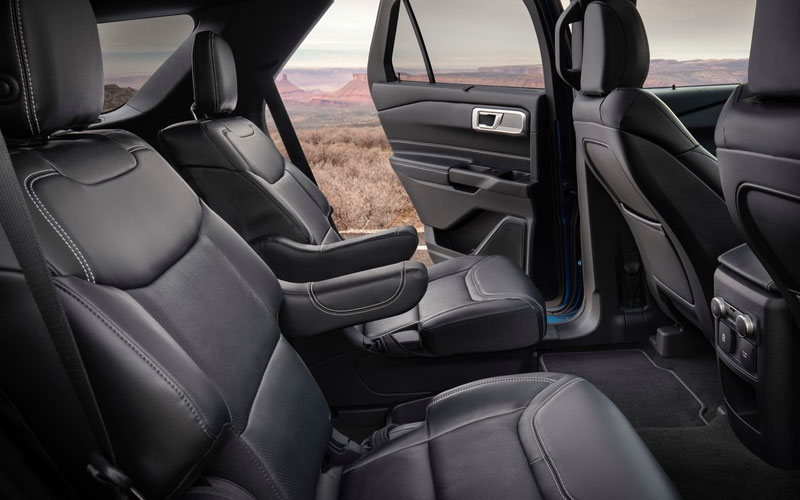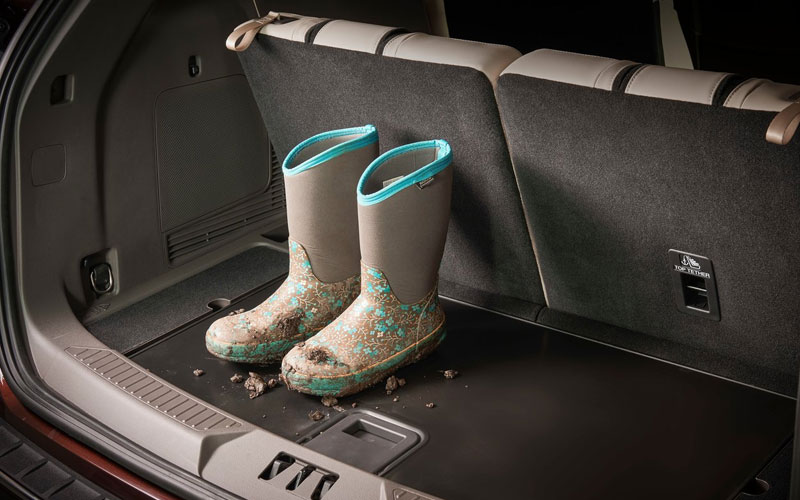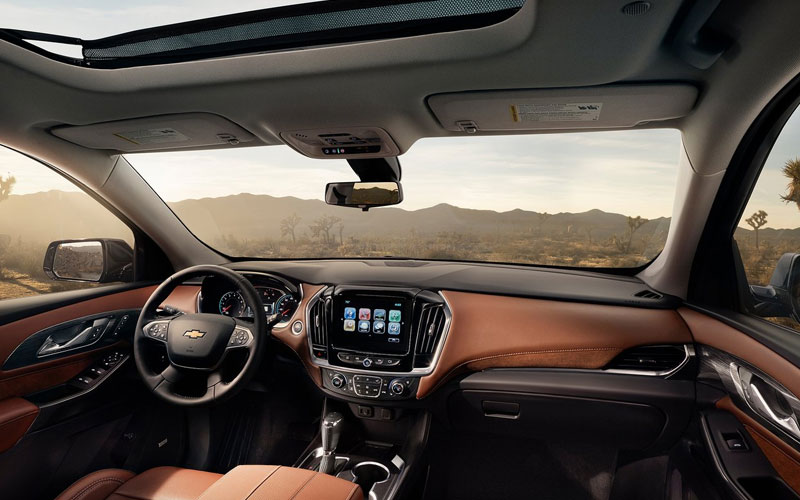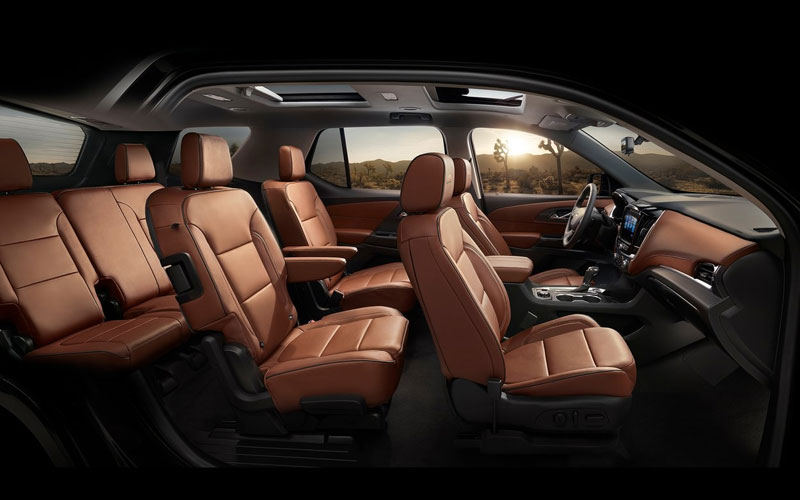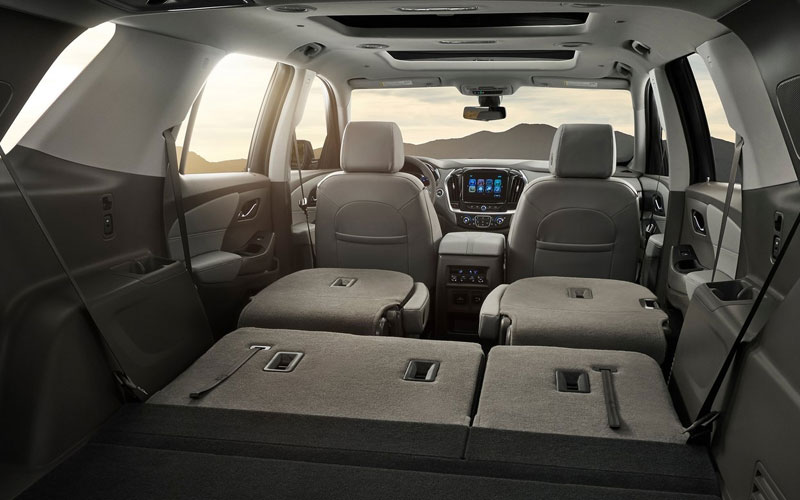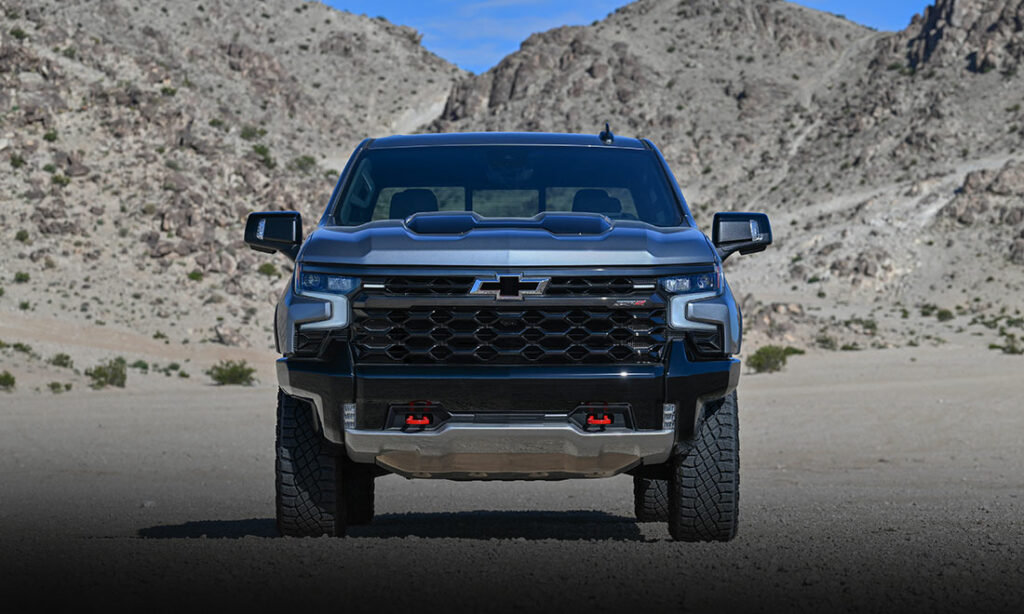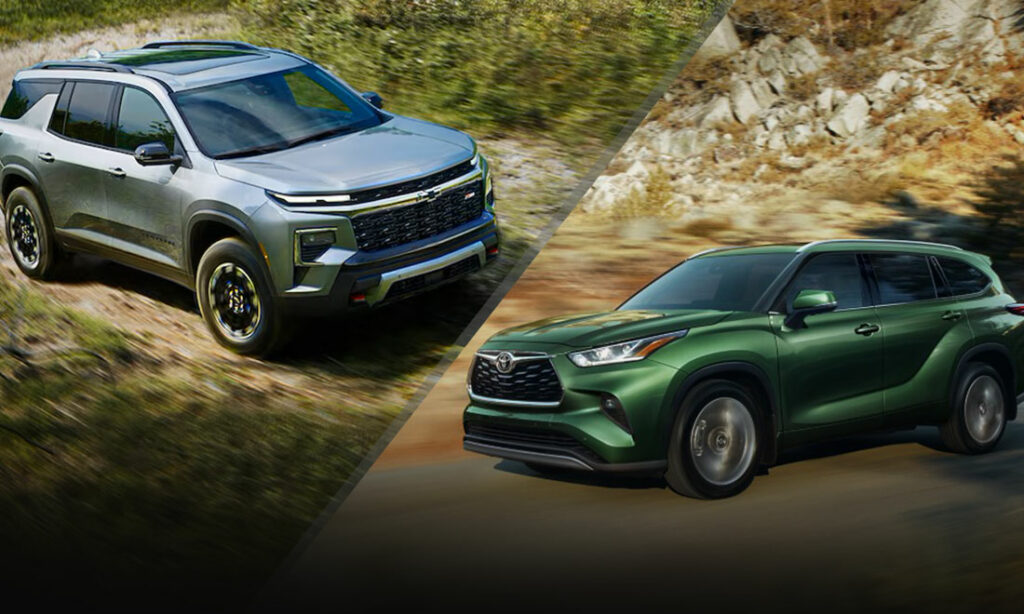Budget Buy $30,000: Ford Explorer vs Chevrolet Traverse
In this used Ford Explorer vs. Chevrolet Traverse comparison, we evaluate which 3-row SUV is the best value for $30,000 or less.
Ford Explorer vs Chevrolet Traverse: Which is the Best Family Car?
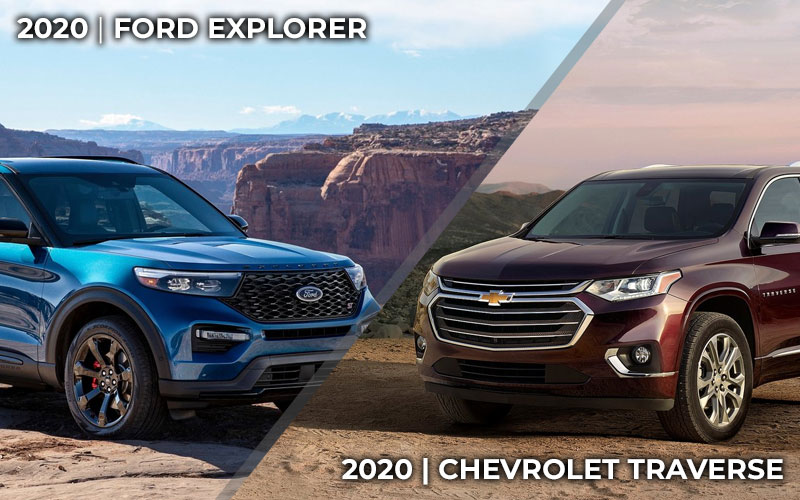
There is no shortage of options in the three-row midsize SUV arena as these vehicles have become supremely popular with American families. Today we’ll be looking at a pair of Detroit bread-and-butter models from the segment in this Ford Explorer vs. Chevy Traverse showdown. Both come standard with three rows of seating and a wide variety of features designed to attract buyers with kids.
Specifically, we’ll be evaluating the used market with a $30,000 price cap, which makes the 2020 model year of both SUVs an ideal place to start. Looking over the listings at CarsForSale.com, you can find a deep pool of Explorers and Traverses, with between 50,000 and 100,000 miles, to choose from.
The all-new sixth-generation of Ford’s venerable Explorer arrived in 2020 riding on an RWD platform. Though they were built with four- or six-cylinder engines across four trim tiers, plus a hybrid, our price range only captures the four-cylinder powered XLT and Limited models.
Across town, Chevy introduced the second-gen Traverse in 2018 with more trucklike looks and a stretched wheelbase that helped keep the big SUV a leader in cabin space. All 2020 models come with a V6, but the Premier and High Country trims are too pricey for this sub-$30,000 comparison. With that said, let’s have a look at where to find the best value in this Ford Explorer vs. Chevy Traverse matchup.
Specs
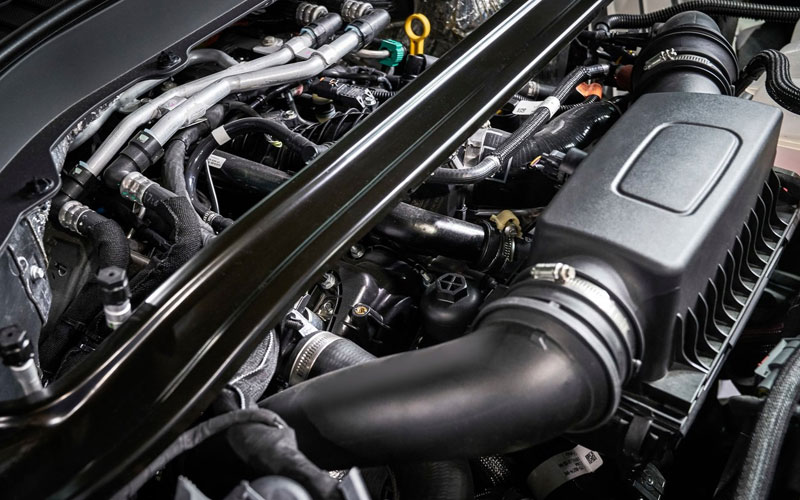
For 2020, the base Ford Explorer came with a turbocharged 2.3L “EcoBoost” inline-4 producing 300 horsepower and 310 lb-ft of torque. Though there is a more potent V6 available, it pushes used pricing to $35,000 and beyond. The 2.3L powertrain, standard on XLT and Limited trim lines, pairs with a 10-speed automatic transmission to spin the rear wheels. All-wheel drive was optional and is readily available on the used market.
Though we are only considering LS, LT, and RS models of the 2020 Chevy Traverse, know that every model that year came with a naturally aspirated 3.6L V6 making 310 hp and 266 lb-ft of torque. The Chevy pairs with a 9-speed automatic and is front-wheel drive. It also offers an AWD system that is easily found on used models.
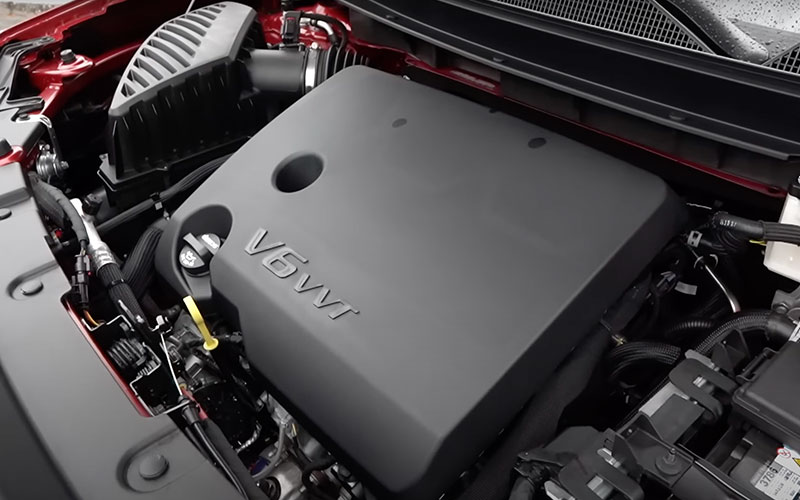
The automotive trend of adding boost to smaller motors in the interest of higher efficiency is spotlighted with today’s comparison. In 2WD form, the 4-cylinder Explorer engine is rated for 21 mpg city & 28 mpg highway. The 6-cyinder Chevy Traverse engine comes in at 18 mpg city & 27 mpg highway. Adding AWD drops the Ford’s figures to 20 city & 27 highway and the Chevy’s to 17 city & 25 highway. Those are fairly large differentials in mileage that illustrate how two extra cylinders impact this important metric.
Driving and Performance
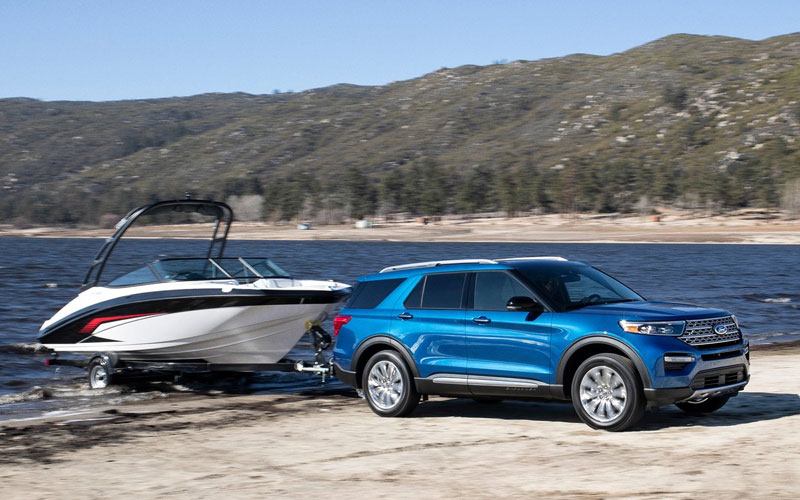
Both SUVS weigh about 4,350 pounds, but the extra torque from the Ford pushes it to 60 mph in six seconds flat, which is a half second faster than the Traverse. Though these are both reasonably quick two-ton SUVS, they are designed to cart the family around with a cushy ride, not be raced between stop lights.
On that front, you’ll find a fully independent suspension under both the Explorer and Traverse that will provide planted, if not exciting, handling. And if ride comfort is what you’re after, be aware that the Explorer XLT and Traverse LS ride on 18-inch wheels, while the higher-level trims sit on 20s that tend to deliver more impact harshness.
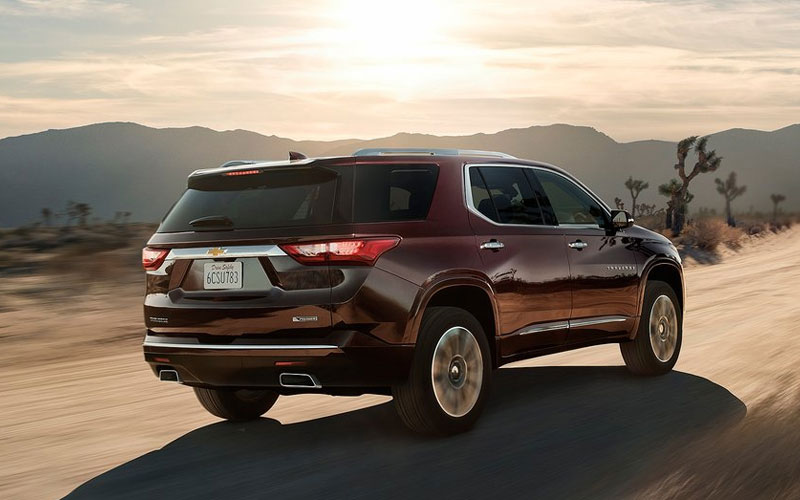
Towing is a near dead heat with the Explorer’s 5,300-pound trailering capacity edging out the 5,000 pounds that the Traverse can handle. These figures require the optional towing packages each manufacturer offers, so be sure to look for that if towing is part of your plan.
Comfort and Interior
For those in need of a truly useable third row and/or as much room to spread out inside as possible, Chevy’s Traverse trounces the Explorer. Though the Traverse only has one extra inch of third-row legroom, that back bench has three seats to the Explorer’s two along with 48 inches of hip room to the 41 found on the Ford. As such, the Traverse can seat seven or eight passengers versus a max of seven in the Explorer.
Thanks to stretching an additional five inches of overall length, the Traverse also dominates the cargo space comparison. It will handle 98 cubic feet of cargo with the back two rows folded to 88 in the Explorer, 58 behind the second row to the Ford’s 48, and 23 cubes with all rows upright versus 18 on the Ford.
Both SUVs come standard with tri-zone automatic climate control and cloth upholstery. Genuine leather is included on the Explorer Limited and Traverse LT Leather models. Chevy’s party trick is the ability to tip and slide the second-row seat out of the way for third-row access, even with an empty child’s seat installed. However, in Limited trim, the Explorer has power-folding second and third-row seats, something the Traverse does not offer.
Trims and Features
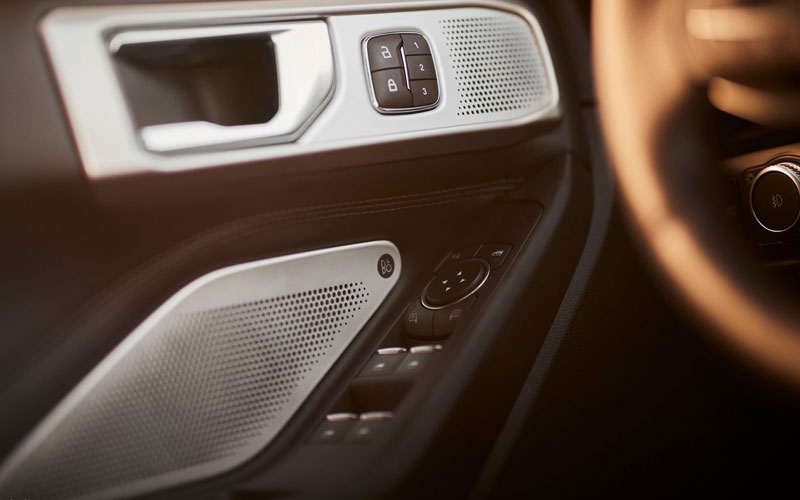
In base XLT trim, the 2020 Explorer comes with a power-operated tailgate, full LED exterior lighting, power-adjustable front seats, and a leather-wrapped steering wheel. The infotainment system consists of an 8-inch touchscreen with Apple and Android integration, a Wi-Fi hotspot, and app-based remote vehicle access. Advanced driver-aids include forward collision mitigation, blind-spot monitoring, rear cross-traffic alert, a lane-keeping system, and automatic high beams.
An entry-level Chevy Traverse LS, by contrast, has a 7-inch infotainment display, manual liftgate, and zero included driver-aids. You’ll need at least an LT Leather model for the 8-inch screen, leather upholstery, blind spot monitoring, and rear cross traffic alert. At the RS level, which is where our $30,000 price cap stops, the Traverse has a heated steering wheel, 10-speaker Bose audio system, navigation, forward collision mitigation, lane-keep assist, and automatic high beams. You can find out about how Chevy has stepped up their driver-aid game with this 2022 model comparison.
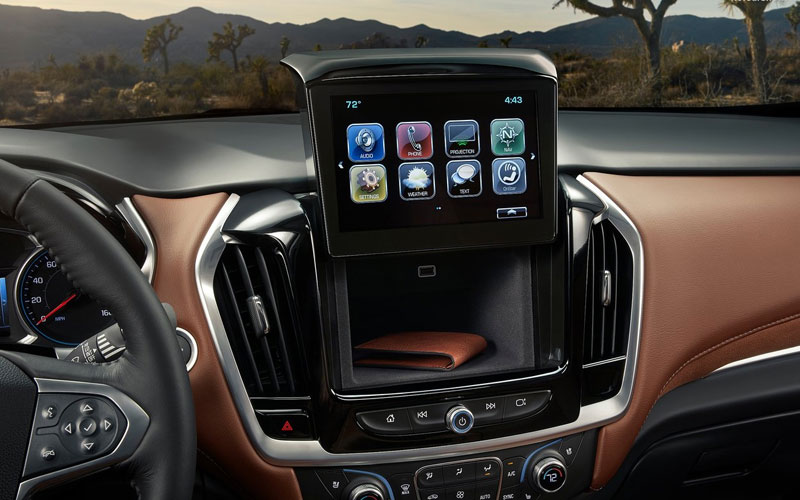
It’s hard to beat the 2020 Explorer Limited when it comes to the best bang-for-buck on trims and features. It is fairly loaded with a hands-free tailgate, rain-sensing windshield wipers, climatized front seats, and heated second-row outboard positions. It also comes with a 12-speaker stereo from Bang & Olufsen, wireless phone charging pad, adaptive cruise control with traffic sign recognition, and Evasive Steering Assist. To see what the latest Explorer offers, check out this new vs. used comparison.
Ford Explorer vs Chevrolet Traverse: The Verdict
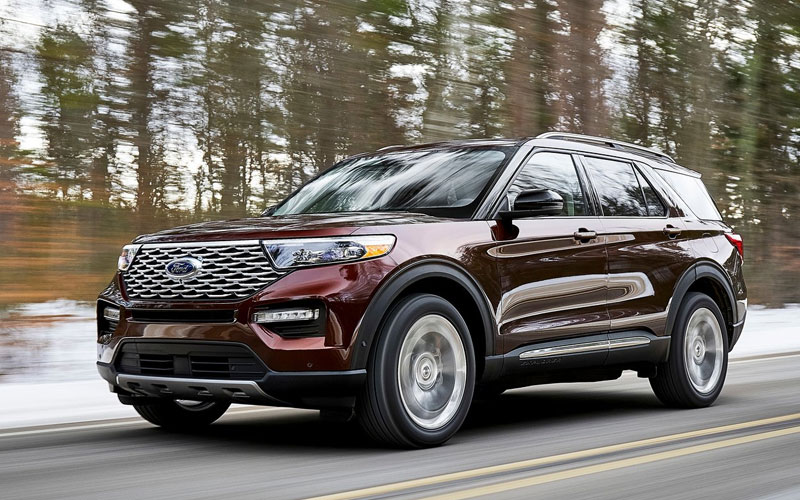
As ever, the verdict on which SUV is best in this used Ford Explorer vs. Chevy Traverse comparison is nuanced. If your number one priority is cabin space, the Traverse wins hands down. However, for the same $30,000, the Explorer has far more advanced driver-aids, better fuel economy, and a generally deeper roster of amenities that are not offered on the Chevy at this price point. If it were my money, I’d be shopping the 2020 Ford Explorer.
Those that have a smaller budget in mind should look at this used Toyota 4Runner vs. Explorer matchup and if it’s that high-end lifestyle you’re after, our sub-$30,000 luxury SUV lineup is for you. However you decide to proceed, be sure to review our Used Car Checklist for tips on getting the best deal.


